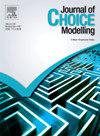Can an ‘informed’ general population sample be comparable to a patient sample? A case study of preferences for chemotherapy induced peripheral neuropathy
IF 2.4
3区 经济学
Q1 ECONOMICS
引用次数: 0
Abstract
Background
In health care preference studies, a general population sample may be the only viable option. However, they lack the understanding of treatment/care of patient samples. This study investigated the impact of providing extra information on general population comprehension of discrete choice experiment (DCE) choice sets. Preferences were compared between an informed and ‘naïve’ general population sample and a patient sample. This was investigated in the context of eliciting preferences for features of a chemotherapy induced peripheral neuropathy (CIPN) assessment tool.
Methods
A general population sample was randomised to two arms. Arm 1 (N = 167) received written information and some pictures about CIPN and Arm 2 (N = 168) received extra information in the form of a short video and moving images. These responses were compared to a patient sample (N = 117) that received the same information as Arm 1. All respondents completed 8 choice sets each.
Results
Arms 1 and 2 of the general population sample had no preference differences, although respondents in Arm 2 had an easier time identifying differences between assessment options than those in Arm 1. The patient and general population sample had overlapping preferences for some attribute parameters, while differences were more in terms of strength of preference rather than differences in preferences.
Conclusions
Extra information can improve general population understanding of DCE choice sets. However, it was not found to bring general population preferences closer to the patient sample. This has implications when considering willingness to pay by patients versus general population.
“知情”的一般人群样本是否可以与患者样本相比较?化疗诱导周围神经病变的个例研究
在医疗保健偏好研究中,一般人群样本可能是唯一可行的选择。然而,他们缺乏对患者样本治疗/护理的理解。本研究探讨了提供额外信息对离散选择实验(DCE)选择集的一般群体理解的影响。在知情和“naïve”的一般人群样本和患者样本之间比较偏好。这是在引发对化疗诱导周围神经病变(CIPN)评估工具特征的偏好的背景下进行的研究。方法一般人群随机分为两组。第1组(N = 167)接受书面信息和一些CIPN的图片,第2组(N = 168)接受短视频和运动图像的额外信息。这些反应与接受与第1组相同信息的患者样本(N = 117)进行比较。所有被调查者每人完成8组选择题。结果一般人群样本的第1组和第2组没有偏好差异,尽管第2组的受访者比第1组的受访者更容易识别评估选项之间的差异。患者和一般人群样本对某些属性参数的偏好有重叠,而差异更多的是偏好的强度,而不是偏好的差异。结论额外的信息可以提高一般人群对DCE选择集的理解。然而,并没有发现它使一般人群的偏好更接近患者样本。在考虑患者与一般人群的支付意愿时,这有一定的含义。
本文章由计算机程序翻译,如有差异,请以英文原文为准。
求助全文
约1分钟内获得全文
求助全文

 求助内容:
求助内容: 应助结果提醒方式:
应助结果提醒方式:


